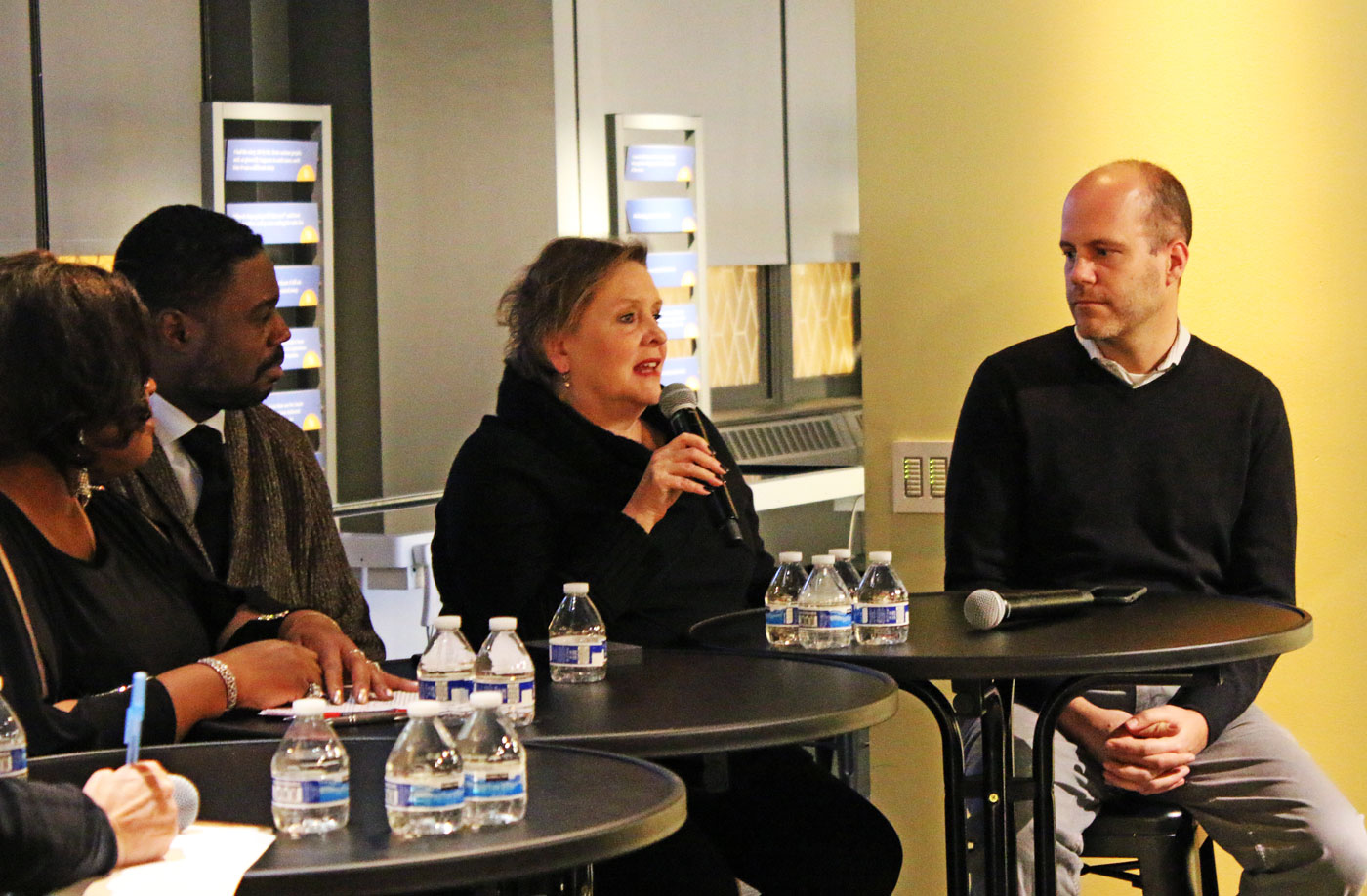“Once a human being is put in prison, we don’t have to think about them anymore.”
Heather Dalmage, the Director of the Mansfield Institute and the panel’s moderator, started off last Tuesday’s discussion with this unapologetic truth.
On a cold January evening, about fifty people converged in the middle of Chicago’s American Writer’s Museum on Michigan Avenue. Sandwiched between an exhibit on Bob Dylan’s lyrics and an interactive worktable covered with half a dozen old typewriters, audience members and experts had a conversation on the impact of performing arts programming in prisons.
In preparation for their celebration of Dr. King and performances of Too Hot to Handel, the Auditorium Theatre created this panel discussion to articulate why they live-stream this show into Cook County Jail, the Juvenile Temporary Detention Center (JTDC), and Illinois Youth Center – Chicago. As Storycatchers Theatre has worked with incarcerated and detained youth since 1990, we were generously asked to share why we do what we do.
Too Hot to Handel soloists Alfreda Burke and Roderick Dixon spoke of how bringing the arts to prisons touches the hearts of those who are incarcerated and lifts their spirits in a way only music can. Cheri Coons and Carla Stillwell, Storycatchers Program and Artistic Managers inside the JTDC, articulated how youth are impacted when given the tools to create art themselves.
Carla and Cheri told a story of a Temporary LockDown ensemble member who, when prompted to write about a hero or mentor in his life, drew a blank. He had had no positive mentors in his life. So instead, he wrote a beautiful story about Hope personified as a visitor in his prison cell. Hope reminded him of his dreams and goals that had been cast aside while in prison, and she gave him a reason to keep going. This story became the basis for the 2018 Temporary LockDown musical.
“By elevating the stories of young people who have been court-involved, we as a community learn so much about the lives of those we might not know,” said Cheri.
Writing stories and converting them into theatre, the panel noted, is an incredible tool that can not only start difficult conversations with youth, but can be used practically to build writing skills that lead to future vocational opportunities.
As Carla noted, many court-involved young people have been educated in underfunded CPS schools. This, compounded with the effects of any trauma or personal challenges experienced outside of the classroom, means we meet fifteen-year-olds who read at a second-grade level. Art is then a way to engage those youth and show them how intelligent they are. Especially when that art represents the experiences of incarcerated youth and is taught by African American facilitators.
“Representation matters. Participants say to us ‘I didn’t know I could write a story.’
So art has multi-pronged effects on these youth,” said Carla. These sentiments were echoed by Roderick and Alfreda, who said that youth have been surprised by their classically trained voices: “They didn’t know an African American man could sing like that.”
At the end of the panel, a woman in the front row asked why the panelists began to do this work.
Carla responded, “I [couldn’t] just keep on doing art for art’s sake. I [had] to do it for something else.”
To witness the many ways the arts impact court-involved young people, experience a Storycatchers show.


